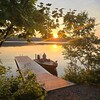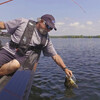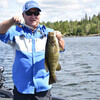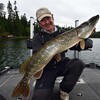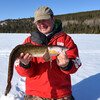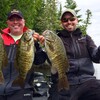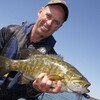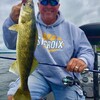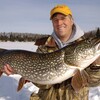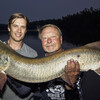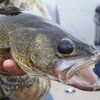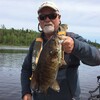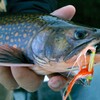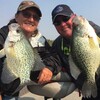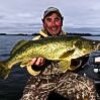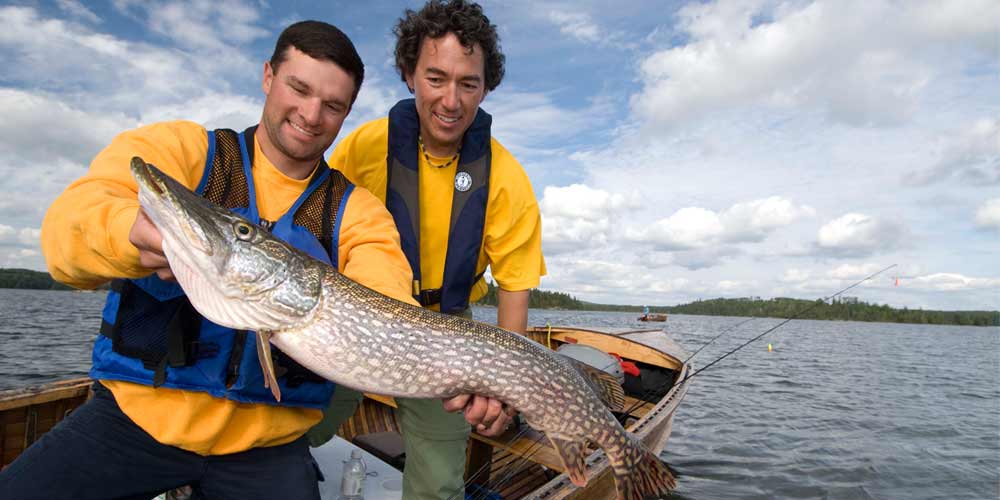Crankin' in Crappies
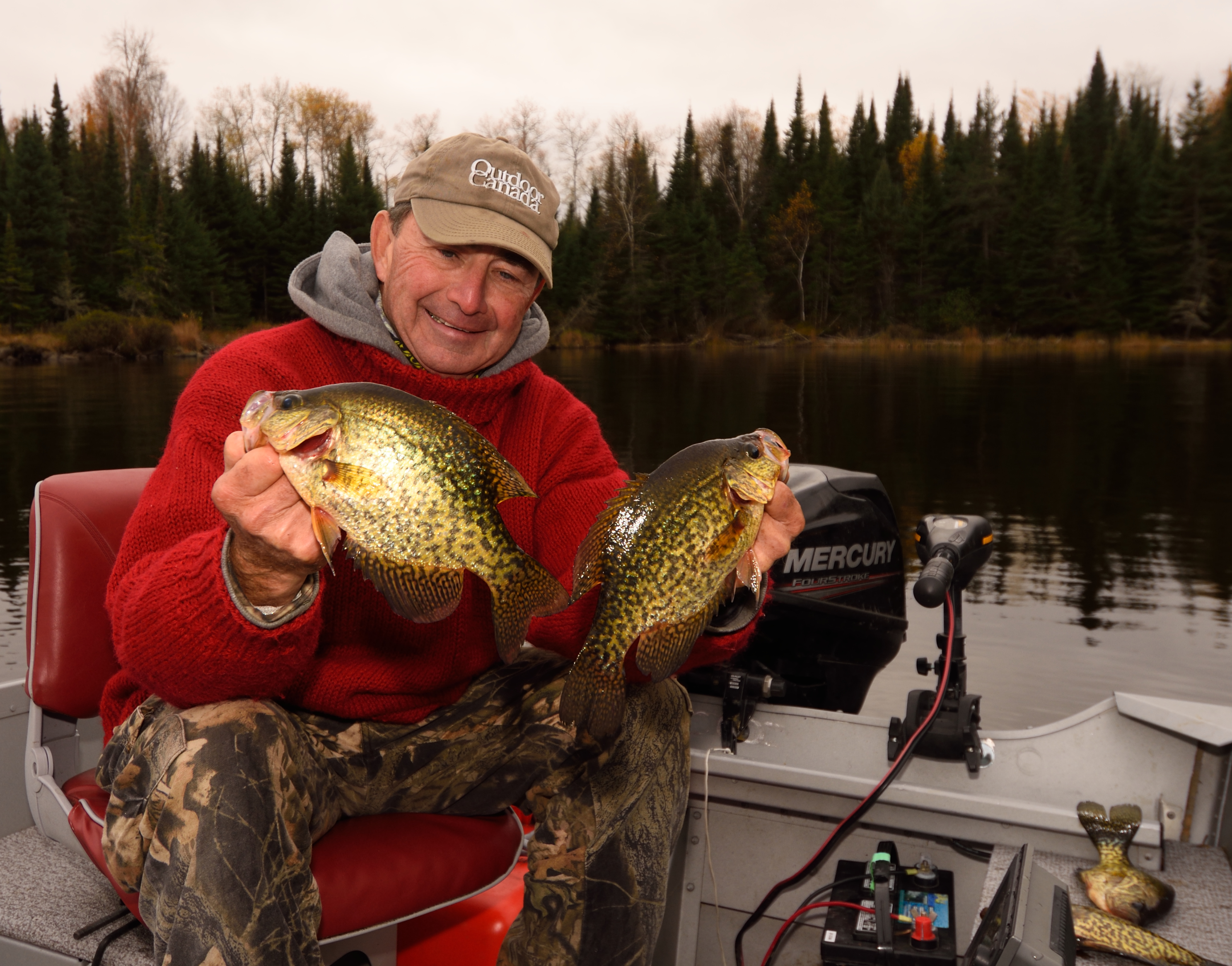
I remember the day like it was yesterday, even though it was over 30 years ago. It was mid-autumn, about this time of the year, and good friend Bob Izumi, former host of the Real Fishing Television Show, had driven up to Kenora to shoot some television episodes with me.
It was a beautiful, warm autumn day when Bob arrived in town, and we sat on the back porch discussing filming options. I remember going through the list of possibilities, including walleyes, muskies, northern pike, as well as largemouth and smallmouth bass. But at the top of my "have to show him" list was the out-of-this-world black crappie fishing that I'd been enjoying.
"Hmmm, crappies," I remember Bob thinking out loud, obviously less than thrilled with the idea; "I don't know how many people know about crappies."
Remember, now, this was back in the early 1980s, long before the fishing world discovered the extraordinary black crappie fishing opportunities that Northern Ontario had to offer.
Anyway, to make a long story short, I persisted in twisting Bob's arm hard enough that he reluctantly agreed to shoot the show. To be honest, I think he was simply humouring me. So off we went by boat down Lake of the Woods. And, as I had promised him, the crappie fishing was off the charts. In fact, it was so good that when the last vestiges of the fast-setting sun were hitting the horizon, I couldn't get Bob to put down his rod and stop fishing.
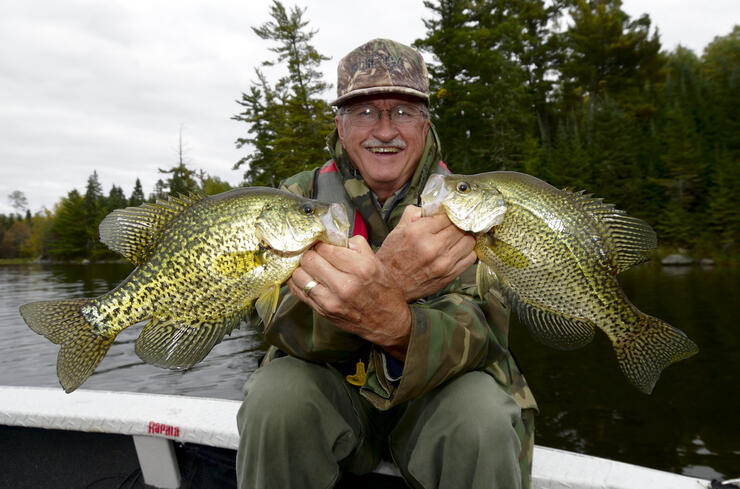
"We've got to leave," I kept saying, as darkness descended upon us some 25 miles down the lake. This was also prior to GPS chart plotters and digital chips adorning the consoles and dashes of our boats. I was relying on paper maps and a flashlight to navigate my way home through the tangle of 14,000 islands.
"Just one more crappie," Bob pleaded. "This is just way too much fun."
I laughed to myself yesterday, recalling that adventure, as I reeled in another beautiful black crappie. Partly because of the nostalgia, partly because black crappies are so sought after these days, and partly because of the way I was fishing –- trolling small crankbaits behind bottom bouncers. It is the same way that Bob and I caught the fish for his television episode so many years ago. Enough years ago, believe it or not, that bottom bouncers hadn't even been invented.
Back then I was bending spinnerbait wire and sliding on egg sinkers to make my own finesse bouncers, whereas yesterday I was using one-ounce single-arm Tait Sticks fashioned by another friend, Cameron Tait, who designs the bouncers for walleyes, although they function just as well for crappies.

The funny thing, too, while so much has changed on the Northern Ontario black crappie front, some things have stayed the same. Like the fact that nearly every crappie angler––resident and visitor alike––typically employs a vertical jigging technique. Indeed, trolling crankbaits for crappies is as foreign today to most anglers as it was 30 years ago.
That is a big mistake, especially when you find the fish spread out along the bottom and not bunched up in tight aggregations or schools. When you find crappies behaving this way, trolling a small crankbait is often your best presentation option.
And while baitcasting combinations are ideal for most bottom bouncing applications involving walleyes and northern pike, I favour a 7-foot long, medium or medium-light action spinning rod, my reel spooled with 6-pound test Sufix 832 braided line.
The light braid serves several important purposes.
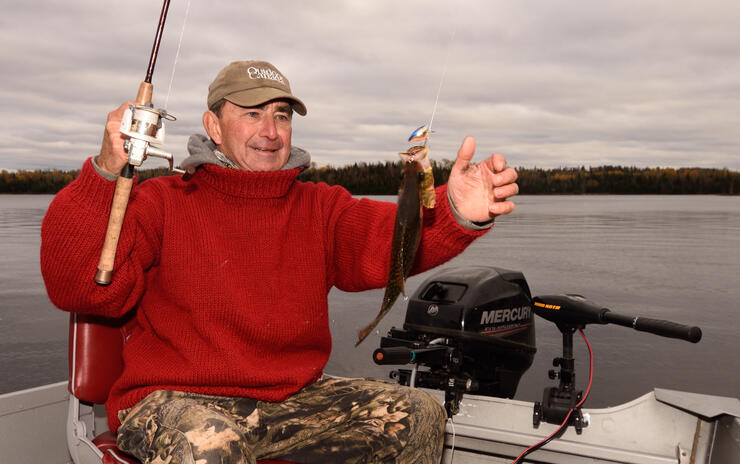
First, it is so spider-web thin that a one-ounce bottom bouncer plunges to the bottom quickly, so you're never trailing long lengths of line behind the boat. And it is super sensitive, so you can feel the most subtle light bite from a crappie.
I slide a Tait Stick onto my line and then tie a small barrel swivel to the end to stop it from going down beyond that point. Then I attach a 4- to 7-foot long leader, comprised of a 4-pound test Maxima Ultragreen monofilament, to the other end of the swivel before attaching my crankbait.
I should mention, too, that I prefer the longer leader when I spot the crappies on my sonar screen hovering two or three feet off bottom. When they're sticking to it like glue, however, I opt for the shorter length.
Maybe the most difficult part of the setup is choosing a good crappie crank, realizing that the best trolling speed is usually between .5 and .75 mph. Most crankbaits don't wobble appreciably at this slow speed, and if you pick up the pace to make them shimmy properly, the crappies won't bite them.
A couple of my favourite crappie cranks are the Rapala Scatter Rap Shad and Scatter Rap Crank. The key with whatever crankbait you select is picking one that wobbles seductively at the slowest possible trolling speed.
Many days it is the best fall crappie technique you can employ, even if you don't have a television show host to impress.
Recommended Articles

Winter Fish Scents
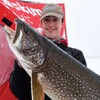
Weather or Not
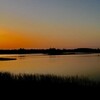
Wilderness WAlleye
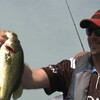
Elmhirst's Resort
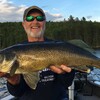
Hawk Lake Lodge
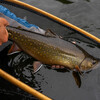
Adventures on the Nipigon River
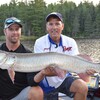
Tamarack Muskies
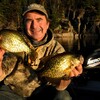
Sweeping the Basin
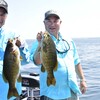
Delawana Resort
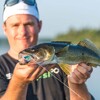
A Shore Thing
Baits for Brookies
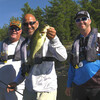
Lang Lake Resort – Outdoor Recreation is their Business
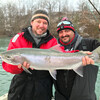
World Class Fishing on the Niagara River
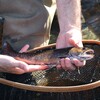
In Search of Solitude and Wild Brook Trout
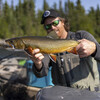
Land a Lake Nipigon World Class Trophy Brook Trout
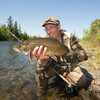
Nipigon Brook Trout
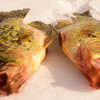
How to: Target Black Crappies (Part 2)
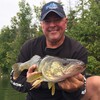
Multi-Species Action
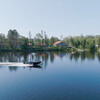
Twitchbait Smallies

